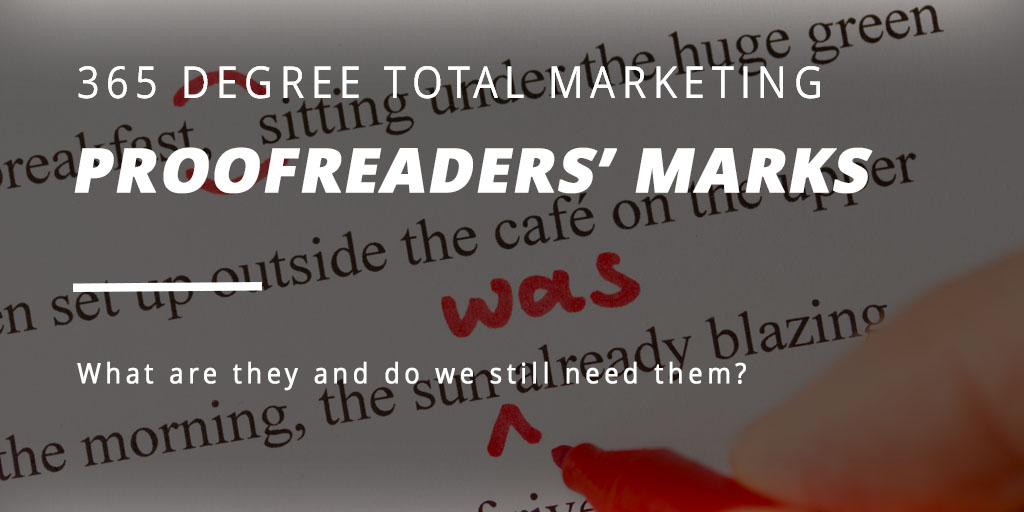
Proofreaders’ marks: What are they and do we still need them?
The act of proofreading will go on forever, but the methods have changed over the centuries. Even in these days of free spell checkers, document editing software, and grammar websites, proofreaders are still important. No matter how much Microsoft Word insists that your document is correct, it probably isn’t, and human experience and understanding of grammar structures will always beat an algorithm.
Oops, need a proofreader!
An error in a document can change the reader’s entire perspective of the content and of the writer. You’ve seen it yourself: how many of you have thought someone was an idiot because of something they posted on social media that had a spelling or grammar error? It really didn’t matter whether their idea had merit. Their mistake automatically created in you a negative perception of them and their content. A proofreader could have saved them from embarrassment and ensured their message had the best chance of your serious consideration.
What proofreaders do
The job of “proofreader” was created soon after the advent of the printing press in the 1400s. The proofreader checks for spelling, grammar, and punctuation errors, using special marks on the page to show where to make changes. Proofreaders doubling as copy editors may also develop style sheets for each document, to ensure a consistent style is used throughout. An example would be deciding how to use a term like “zip lining/zip-lining/ziplining” and making sure it’s used the same way throughout a single document. None of the versions of ziplining is more correct than the others; it’s just that English is a constantly evolving language, and new compound terms tend to start as two words, then become hyphenated, then become joined together as one word.
Proofreading and editing are not the same, but the two tasks may be assigned to one person. The editor also alters and corrects content and syntax. Another similar job is fact checking; the fact checker confirms with the writer the sources of the facts, determines whether the sources are reliable, and does additional research as needed to ensure the facts are indeed true. The editor may also be responsible for this task, thus wearing three hats: proofreader, editor, fact checker.
Universal marks
But back to proofreading … proofreading marks are a series of shorthand symbols and abbreviations that the proofreader places in the margins and/or within the text to indicate where corrections should be made. These marks were developed over a few centuries and became relatively uniform (see the example for some commonly used marks), although some publishers and editors have their own in-house proofreading marks. The marks used to be made in blue pencil so they wouldn’t show up in the photos the printers would take to make the printing plates, but as the process has become more digitized, some editors have moved to using red pens to mark up copy to ensure each mark is clearly visible when returned to the writer or designer for correction.
Digitization has changed the mechanics of the proofreader’s job a lot. Now, instead of the proofreader’s marks on printed paper, you’re more likely to see digital documents where corrections are marked with comment bubbles, highlighted words/sentences, and changes “tracked” so the writer or designer can see the markups. Even with a PDF, you can highlight words and make notes to the side.
Onscreen. On paper.
So why are proofreaders’ marks still being used? Because proofreading on paper delivers better results. Since we know what we meant to write, our brains may ignore errors, filling in with the correct words or spellings. When we review material onscreen, we often miss errors simply because our brains “autocorrect” them. Changing the content format from digital to print makes it less familiar to us, which can cause the brain to be more alert to errors. “Printing it out” is among many professional proofreaders’ top tips for producing error-free content because people read text differently between paper and screen. Many proofreaders print out and mark up on paper, then transfer their edits to the online document.
Here at 365° Total Marketing, our editors/proofreaders use multiple tools and methods for proofreading our clients’ content: digital spelling and grammar checkers, online proofing, and printouts. We go through at least seven rounds of edits before a document goes to press or goes live online. So yes, we still use traditional proofreaders’ marks in addition to the latest digital tools.
We have your back!
Make sure your content is error-free and the best it can be! Contact 365° Total Marketing today at 1-800 697-5568 to put our proofreading skills to work for you!
—Teresa Greer, Managing Editor
